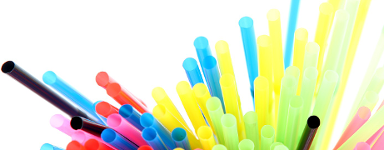CORPORATE ACTION: KFC
KFC Initiative On Single-Use Plastic in Macau and Hong Kong
 KFC outlets in Hong Kong and Macau will stop automatically giving out plastic straws and lids for customers eating in the store, but will provide them if asked. They will also be added to takeaways and select items. KFC made the decision following a trial in which most customers were happy not to have a plastic straw or lid. Greenpeace has acknowledged the move but added that plastic straws and lids are just a fraction of the plastic disposables used by the chain. The environmental group estimates that KFC uses some 42 million plastic disposable items each year, but even this is less than some local chains, according to Greenpeace.[Image Credit: © Christopher on pexels.com]
KFC outlets in Hong Kong and Macau will stop automatically giving out plastic straws and lids for customers eating in the store, but will provide them if asked. They will also be added to takeaways and select items. KFC made the decision following a trial in which most customers were happy not to have a plastic straw or lid. Greenpeace has acknowledged the move but added that plastic straws and lids are just a fraction of the plastic disposables used by the chain. The environmental group estimates that KFC uses some 42 million plastic disposable items each year, but even this is less than some local chains, according to Greenpeace.[Image Credit: © Christopher on pexels.com]
CORPORATE ACTION: Other
Aramark Makes Inroads To Eliminating Single-Use Plastic In Its Operations
.jpg&width=125&height=157)
Customer service business, Aramark, which operates in the food and facilities management sectors, announced a commitment to reducing significantly single-use disposable plastics globally by 2022. To date, it has eliminated over 400,000 plastic straws from locations in the UK, with another 418,000 planned in Ireland by the end of the year. It has also replaced with a compostable substitute some five million plastic-lined coffee cups and soup containers. It is now setting its sights on other single-use plastics items, including bags and cutlery.[Image Credit: © Aramark]
ALLIANCES, PARTNERSHIPS & JVs
Indian Collaborators Achieve Large Savings Manufacturing Hand Bags With Paper Waste And Pulp
MARKET NEWS
Some People Are Seeing Single-Use Plastic Reduction As An Opportunity
 With estimates suggesting that each minute some million plastic bottles are purchased globally and a truckload of plastic enters our oceans, there remains a long way to go in addressing the problem of plastic waste. Governments and companies are accelerating programs to reduce single-use plastic, but work is also going on to find substitutes. New solutions are emerging, such as bio-plastics and edible plastic, as well bamboo toothbrushes and straws made of pasta. Some entrepreneurs are viewing the challenge as more of an opportunity. Houston’s Plum Vegan Catering offers a zero-waste catering service. And investors are getting on board too. Final Straw, which makes foldable steel straws, raised $1.8 million via Kickstarter.[Image Credit: © FinalStraw]
With estimates suggesting that each minute some million plastic bottles are purchased globally and a truckload of plastic enters our oceans, there remains a long way to go in addressing the problem of plastic waste. Governments and companies are accelerating programs to reduce single-use plastic, but work is also going on to find substitutes. New solutions are emerging, such as bio-plastics and edible plastic, as well bamboo toothbrushes and straws made of pasta. Some entrepreneurs are viewing the challenge as more of an opportunity. Houston’s Plum Vegan Catering offers a zero-waste catering service. And investors are getting on board too. Final Straw, which makes foldable steel straws, raised $1.8 million via Kickstarter.[Image Credit: © FinalStraw]
McKinsey Encourages Chemical Industry To Cut Plastics Pollution Via New Recycling Business
 McKinsey believes the chemical industry has a key role to play in addressing plastics pollution and that in doing so it has the opportunity to create a new recycled plastics business with a profit poll of $55 billion by 2030. Effectively tackling this issue will require a shift from the ‘one and done’ principle that has underpinned plastic production. McKinsey estimates that just 16 percent of plastics waste is currently reprocessed to make new plastics and that the volume of plastics going to recycling could increase fivefold by 2030. Effective recycling could capture a valuable resource as well as avoid large disposal costs. The three major approaches to plastics recycling include mechanical, chemical, and processing the plastics waste back to basic feedstock through catalytic or thermal processing.[Image Credit: © Monica Volpin @ Pixabay.com]
McKinsey believes the chemical industry has a key role to play in addressing plastics pollution and that in doing so it has the opportunity to create a new recycled plastics business with a profit poll of $55 billion by 2030. Effectively tackling this issue will require a shift from the ‘one and done’ principle that has underpinned plastic production. McKinsey estimates that just 16 percent of plastics waste is currently reprocessed to make new plastics and that the volume of plastics going to recycling could increase fivefold by 2030. Effective recycling could capture a valuable resource as well as avoid large disposal costs. The three major approaches to plastics recycling include mechanical, chemical, and processing the plastics waste back to basic feedstock through catalytic or thermal processing.[Image Credit: © Monica Volpin @ Pixabay.com]
POLICY, REGULATION & LEGAL
The US And Other Countries Should Look To Norway For Possible Solutions To The Plastics Problem
 Norway is being seen as a standout for innovation aimed at reducing plastic use. It recycles all but a small percentage of plastic bottles, using a bottle deposit scheme nationally that enables consumers to exchange containers over the counter in a range of stores as well as reverse vending machines in public spaces. In return, consumers receive cash or store coupons. The recycled plastic is used in a variety of ways, including packaging, textiles and new bottles. With China, for example, backing away from accepting recyclable materials from other countries, the US and other economies are having to look at alternative approaches to dealing with the problem of plastic trash, and some of the reactions, such as Oregon recycling processors being allowed to send recyclable materials to landfills, are not long-term solutions. Dune Ives, executive director of the Lonely Whale Foundation, believes the US should look at the way Norway and other countries are tackling the issue, by improving the messaging and changing consumer behavior. Ives said that US consumers were surprised at how much wasn’t being recycled and were open to ways to improve the situation. Bottle deposit schemes might be one approach that US consumers might embrace, but brands must also explore other possible solutions, including next-generation plastics that can be composted, reused, eaten or more easily recycled. Norway, for example, chose two PET resins for manufacturers to work with and then established a value chain that focused on recycling them.[Image Credit: © Matthew Gollop]
Norway is being seen as a standout for innovation aimed at reducing plastic use. It recycles all but a small percentage of plastic bottles, using a bottle deposit scheme nationally that enables consumers to exchange containers over the counter in a range of stores as well as reverse vending machines in public spaces. In return, consumers receive cash or store coupons. The recycled plastic is used in a variety of ways, including packaging, textiles and new bottles. With China, for example, backing away from accepting recyclable materials from other countries, the US and other economies are having to look at alternative approaches to dealing with the problem of plastic trash, and some of the reactions, such as Oregon recycling processors being allowed to send recyclable materials to landfills, are not long-term solutions. Dune Ives, executive director of the Lonely Whale Foundation, believes the US should look at the way Norway and other countries are tackling the issue, by improving the messaging and changing consumer behavior. Ives said that US consumers were surprised at how much wasn’t being recycled and were open to ways to improve the situation. Bottle deposit schemes might be one approach that US consumers might embrace, but brands must also explore other possible solutions, including next-generation plastics that can be composted, reused, eaten or more easily recycled. Norway, for example, chose two PET resins for manufacturers to work with and then established a value chain that focused on recycling them.[Image Credit: © Matthew Gollop]
INNOVATION & TECHNOLOGY
Beverage Company Trials Edible Drinks Sachets
Copyright 2025 Business360, Inc.

